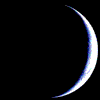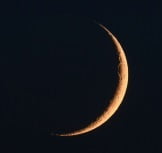here is your August 2022 lunar calendar for the garden.
This calendar is established from biodynamic calendar (based on the work of Maria Thun).
You will find my recommendations there for your natural vegetable garden for every day of this month of this month of August 2022.
GARDENING WITH THE MOON – BASICS
Gardening with the Moon is in fashion…
Relying on the Moon for gardening is for some a belief from another age, for others evidence based on concrete observations...
It's up to everyone to do according to their convictions and beliefs.
Some work, notably carried out by biodynamicists, tends to show that the Moon, but more broadly the stars, have a certain influence on plants.
The ancients scrupulously followed the lunar phases...
For biodynamicists, it is rather the lunar cycle that would be important to take into consideration.
I have personally observed that it is better to avoid lunar nodes when sowing or planting…
It is also easy to see that sowing carried out a few days before the full moon (therefore in the waxing lunar phase) will sprout much more quickly than sowing carried out in the waning phase...
For the rest, I think that these notions are only guidelines intended to get the most out of your vegetable garden. It’s up to you to do according to your observations and beliefs…
But above all, don't forget that common sense must prevail on the moon... For example, if it is going to rain heavily the next day when you have planned to sow, it may be preferable to sow the same day.
Lunar phases (approximately 29 1/2 days)
The ancients took the lunar phases into account when sowing or planting.

- The Moon is growing from New Moon to Full Moon. This period is favorable for working the land, treatments (plant-based of course!), transplanting, planting and sowing fruit vegetables. Vegetables harvested during the waxing moon keep better.
- She is decreasing from Full Moon to New Moon. This period is ideal for sowing things that should not go to seed (salads, spinach, onions). This is also the ideal time to work the land, harvest (increased flavor) or even prune trees and shrubs whose growth you want to limit.
Lunar cycle (approximately 26 days)
The work of biodynamicists shows a priori a greater influence of lunar cycles on plants.
The lunar cycle describes the trajectory of the Moon in the sky:
- It is said ascending* (or rising) when its trajectory is higher from one day to the next. The sap then rises in the plant. This period is favorable for sowing, planting bulbs, grafting or even harvesting fruits and vegetables intended for fresh consumption.
- Conversely, it is said descending* when its trajectory is lower from one day to the next. The sap goes down into the roots. It is then time to plant, transplant, take cuttings, layer, prune, work the soil, and add organic matter.
Special days

- Avoid sowing on new moon days.
- If the Moon is in apogee , avoid sowing.
- If the Moon is in perigee (especially after the full Moon), it is a risky situation for plants sensitive to cryptogamic diseases. This enhanced lunar activity can develop such diseases. It is therefore appropriate for prevention to carry out plant-based sprays (for example horsetail decoction on the ground for tomatoes to prevent late blight ). It is also a good day for sowing, except for plants susceptible to cryptogamic diseases.
- If there is an unfavorable day ( lunar node ) avoid gardening.
The Moon and the signs of the Zodiac
The moon orbits the earth in 27 days, passing each of the twelve constellations of the zodiac.
Thus, the different elements are associated with 3 signs of the zodiac:
- With the earth constellations (Taurus, Virgo and Capricorn) we associate root vegetables ( garlic, beetroot, carrot, turnip, shallot, onion, radish, potato) as well as bulb flowers.
- The air constellations (Gemini, Libra and Aquarius) correspond to flowering vegetables. as well as annual and perennial flowers, flowering trees and shrubs and even aromatic and medicinal plants from which the flowers are harvested.
- The water constellations (Pisces, Cancer and Scorpio) correspond to leafy vegetables (artichoke, celery, chicory, cabbage, watercress, spinach, lettuce, leek) and aromatic and medicinal plants from which the foliage is harvested.
- With the fire constellations (Aries, Leo and Sagittarius) we associate fruit plants (eggplant, cereals, cucumber, squash, bean, strawberry, raspberry, bean, melon, pepper, pea, pumpkin, tomatoes) and fruit trees.
HOW TO USE THE LUNAR GARDEN CALENDAR?
As far as I am concerned, I use the lunar calendar above all as a planning tool for my crops.
I try to respect the planting and sowing periods as best as possible, as well as fruit, root, leaf or flower days... if the weather, the progress of my work (if the land is not ready for sowing, better to wait until it is than to sow in bad conditions!) or even my availability (material but also psychological… we are more successful with our sowing when we are in good energy for it) allow it.
In short, I do not consider this lunar garden calendar as an absolute rule but rather as a simple guide.
My only “forbidden” are the days of lunar or planetary nodes…





Leave a comment
All comments are moderated before being published.
This site is protected by hCaptcha and the hCaptcha Privacy Policy and Terms of Service apply.